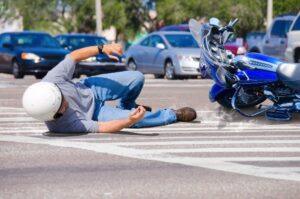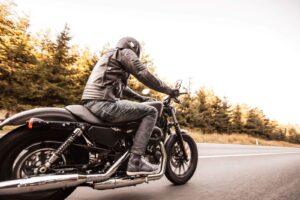
Are you ready to invite a friend on a motorcycle ride with you? Or have you been invited by a friend to go for a bike ride as a passenger? Either way, you may have questions about motorcycle safety for passengers.
As you can imagine, both the rider and the passenger need to do their part to ensure that the ride will be safe. So let us take a look at both sides, starting with the rider’s responsibilities.
The Passenger Should Have Motorcycle Riding Experience
The rider should have enough motorcycle riding experience to be able to handle the extra challenges of transporting a passenger. And there are several of those.
First, there are the physical demands of having a second person on the bike. Depending on the weight of the passenger, your bike may require some adjustments in terms of tire pressure and possibly the suspension. Some motorcycles cannot even handle the additional weight. Check your manual.

Your Motorcycle Will Behave Differently
Assuming that it can handle the extra person, your bike will still behave differently. For example, it will require more power to accelerate, and it will take longer to slow down and come to a stop. It will also feel different during turns and in curves and might even become hard to handle, especially if the passenger is inexperienced.
All of these will require adjustments in your riding technique. Remember, by carrying a passenger, you are taking on the responsibility for the life and safety of another human being.
Contact our Kansas city personal injury lawyers now.

Safety Gear for the Passenger
If your passenger does not have his or her own safety gear, than you should provide it for him or her. At the very minimum, they will need a helmet (even though Kansas does not legally require one for riders and passengers over the age of 18 – while Missouri law requires everyone to wear a helmet).
Of course the helmet must fit the passenger, and that may not always be as easy as it looks. It needs to be big enough to fit comfortably, yet not so big that it can slide off during an accident. To check the size, have your passenger put it on and then grasp the back of the helmet and try to pull it over their head. If it comes off, it is too big.
In addition, the passenger should also wear eye protection, for example a visor or goggles, And while it may not be legally required, a passenger should also be dressed for riding safely. Ideally, they should wear a jacket and long pants made out of leather or another very sturdy material, as well as gloves and boots.

Coaching The Novice Passenger
There is also some coaching required, especially if the passenger is new to motorcycles. First, the rider needs to explain the basics, including how to get on and off the bike. Then, your passenger must keep the feet on the pegs or footrests during the entire ride, and stay away from the hot parts like the exhaust system to avoid getting burned.
To ensure a safe ride, your passenger also needs to know how to hold on to your waist, and how to lean into curves. If they try to lean against the curve, they can affect your bike’s balance, and if they grab your shoulders or your arms, they can cause you to lose control. Either of these could result in an accident.
Communicating about the ride
Before going on the ride, you need to talk about how long the ride will be and where you are going. Be sure to start with a short ride, to give your passenger a chance to get familiar with how it feels. If they enjoy it, you can proceed to longer rides. If they get scared, be sure to respect that.
You will also have to talk about how to communicate while riding. If you both have blue-tooth helmets, this will be easy. But generally, you’d agree on a set of hand signals, such as taps on your shoulder, so that your passenger can let you know how it’s going and when you’ll need to slow down or stop.
The Passenger’s Side
If you have been invited on a motorcycle ride as a passenger, you may have a lot of questions. Be sure to ask them, starting with questions about the rider’s experience. How long have they been riding? How often do they ride with passengers? If you would be the first one, stay off the bike! Do not let them practice with you.
If you decide to go for the ride, pay close attention to the instructions and follow them. Make sure you understand everything, from how to move your body during various parts of the ride to how to communicate during the ride. And be sure to hold on to the rider’s waist. Your safety will depend on it.
What if the rider is a close friend and you expect to be riding with him or her often? Then start getting your own safety gear: your helmet, eye protection, and protective clothing, and enjoy the rides.




